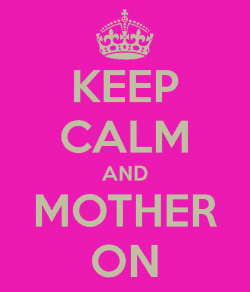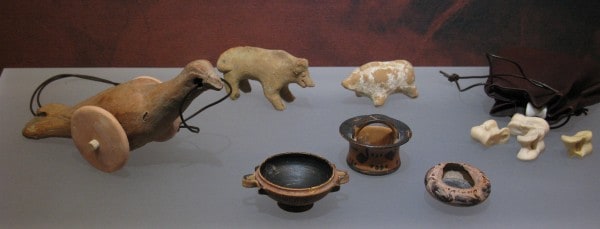As a graduate student at the University of Michigan, I had to write what was called a “preliminary paper.” This paper had to be an original analysis of archaeological data, and was a requirement in lieu of a master’s thesis for those of us continuing on to the doctoral program. I don’t recall why, but I decided to write about an unusually large group of miniature clay vessels found at a prehistoric site in Michigan. One facet of my research was to comb through archaeological literature seeking interpretations of miniature vessels from other sites around the globe. A common interpretation of these very small pots was that children used them as toys and playthings, but I could find no evidentiary basis from any source (archaeological, historical, or ethnographic) to substantiate these claims in any particular case.
This attribution of small artifacts to small people piqued my interest, and I realized that beyond serving as a convenient explanation for artifacts with no known function, I had never read an archaeological interpretation of the past that included children. Why not? Where were they? What were they doing? This revelation led to my dissertation work on the visibility of children in archaeological contexts- work that was taking place at a time when several other eloquent and talented researchers were beginning to address this lacuna in archaeological scholarship as well.
Many of us took up the archaeology of childhood as a cause of sorts, and we had a few things to say to a discipline that for generations had been ignoring the presence of children in the past. I’ll summarize them quickly.
1) Children are everywhere. It is not possible to find a documented society where children are not present in significant numbers. This means almost any archaeology we do involves children- like it or not.
2) Archaeologists are products of modern, western societies that tend to characterize children as people who primarily are learning to be adults. Only once people become adults do they become socially, economically, and politically significant. This is a very limited view of childhood that should not be unthinkingly projected into the past.
3) Ethnographic evidence shows cultural constructions of childhood vary significantly across cultures. Such sources illustrate that children are important cultural actors, often making considerable economic and social contributions to their families and communities. Children also structure adult lives, resources, and priorities in variable, but significant ways.
4) Every category of archaeological evidence used to interpret the past has been demonstrated to reveal information about the lives of adults and children alike. It’s the job of the archaeologist to take the time to engage the past with a perspective that allows them to see a variety of cultural actors, not just the traditional default category of adult men.
In short, children are important people too, and any interpretation of the past that ignores children is, at best, incomplete.
Women as Scholars of Children (in the past)
Most of the scholars conducting this research are women, and it can be argued that the archaeology of childhood is a very feminized subject. A quick review of four well-known edited volumes on the subject produced a list of senior authors consisting of 32 women and 8 men. This trend is not confined to archaeology, or to published works. The program for the upcoming biannual Society for the History of Childhood and Youth Conference (Vancouver, June 2015) indicates 184 women and 34 men will be giving presentations. At the upcoming interdisciplinary Society for the Study of Childhood in the Past conference, (Chicago, September 2015) there will be papers by 36 women and 5 men.
Audiences for research on children also seem to be comprised predominantly of women, although this is much more difficult to assess systematically. I offer two anecdotes.
A colleague, Richard Irvine, (@robotforaday) was attending the Association of Social Anthropologists of the UK and Commonwealth conference at the University of Exeter (#ASA2015Exeter) and he was tweeting from the conference. One tweet that caught my eye was a laudatory one about the quality of a session he had been attending on children.
The second tweet about the panel revealed something about the anthropological study of children being done by women for an audience of women.
Not a week later, I was at the Society for American Archaeology meetings in San Francisco and was having coffee with a graduate student beginning her doctoral work on an archaeological study of children in 19th century institutions. She was presenting a poster and had an excellent position in the poster room at the very beginning of a row directly in line with the main entrance to the exhibit hall. She was delighted with how much foot traffic her poster had, but she lamented that only women would stop and talk with her about her research. She said men would look at the poster, take in the topic, and immediately walk away.
The Motivated Mother

My experience is not unique, as many of my female colleagues have confided that they too are asked regularly about the connection between their reproductive choices and their research. Such connections, of course, are as diverse as the women being asked. I am certainly not the only child-free, or child-less woman studying children. I have colleagues who make no connection between their decision to have children and their desire to study them in the archaeological record. And, there are others who acknowledge that it was the changes in their own life brought on by motherhood that inspired them to think about the archaeological record in a way that included children.
Out of curiosity, I asked a handful of male colleagues who study children if they were ever asked about their academic work on children and their decisions about fatherhood. None of them had ever been asked.
Justification and Doubt- Diminishing Child Subjects and Women Scholars
These contemporary dynamics around the study of children in the past are not inconsequential. Feminized research topics are often relegated to marginal positions or seen as “less than” other topics, perspectives, and ideas in a discipline. The quiet assumption children are only a viable/interesting topic in archaeology because it is of interest to women working out their interests/issues in motherhood diminishes children as scholarly subjects and women as scholars.
One of the ways that this feminization/marginalization is realized in scholarship is that writing becomes a form of justification. Read nearly any work on the archaeology of childhood and you will find a preamble explaining why studying children in the past is important, necessary, and viable. This writing draws on some permutation of the four points I articulated at the beginning of this essay. This need to justify the study of children is notable because of its persistent ubiquity in the literature- it has never stopped. I personally have come to the conclusion that we cannot move scholarship on the archaeology of childhood forward until we cease its justification, and instead write about children with the same authority that is granted to other archaeological subjects.
Another manifestation of these dynamics is in the need to go above and beyond to prove children were present in the past. When I was doing my dissertation research on children at 19th century domestic sites, I recovered pieces of miniature tea sets that were widely advertised as children’s toys. Multiple colleagues told me that I could not definitively use these artifacts as proof of children, because they might be miniature sample sets from door-to-door sales representatives selling china patterns to hoteliers, tavern keepers, and housewives. (I used them as evidence of children anyway.) Apparently for some, unless you have exhausted every adult-related explanation for an artifact, you cannot suggest that children were present in the past. Labeling children as unknowable in archaeology allows one to sidestep the difficult work of interpreting the past with multiple categories of actors.
Interestingly, there seems to be a disconnect between the lives of archaeologists and the lives they recreate for their subjects in the past. In a 2003 survey of professional archaeologists, 83% of Females and 64% of males considered juggling a family and a career to be a common or very common problem (Baxter 2005). A 2012 special issue of The SAA Archaeological Record on work-life balance included articles authored by men and women, and the primary focus of every article was parenting. I am not in any way trying to suggest that contemporary parenting is a model for parenting in the past, or that any projections of modern childhood should inherently find their way into archaeological interpretations.
I am only suggesting in the present, moms and dads, aunts and uncles, grandmas and grandpas all seem pretty certain that children are important, but only some of us seem to think that children were important in the past.

Imagine an archaeologist in the future writing about your present without children. Imagine them having to justify that the children in your world were important so their colleagues might listen to what they have to say. Imagine them interpreting your child’s elementary school art project as your work or the work of your partner.
As anthropologists, we can marvel at the diverse possibilities of how childhoods can be constructed and defined across time and space, but it is hard to imagine a world where children weren’t present or where children didn’t matter.
Reference Cited
2005 Gendered Perceptions of Archaeology: A Perspective from the SAA Member Needs Assessment Survey. The SAA Archaeological Record. 5(4): 7-9.








